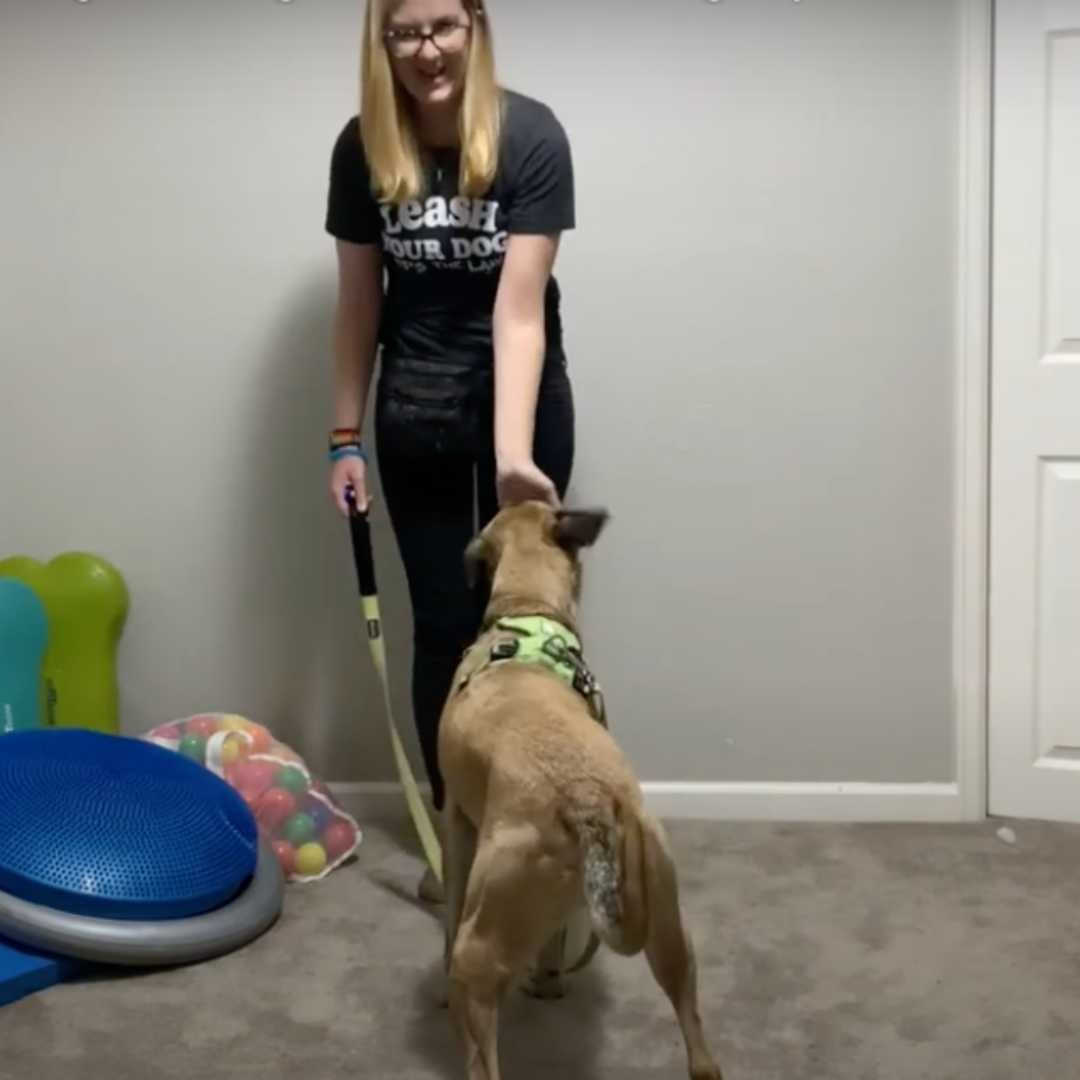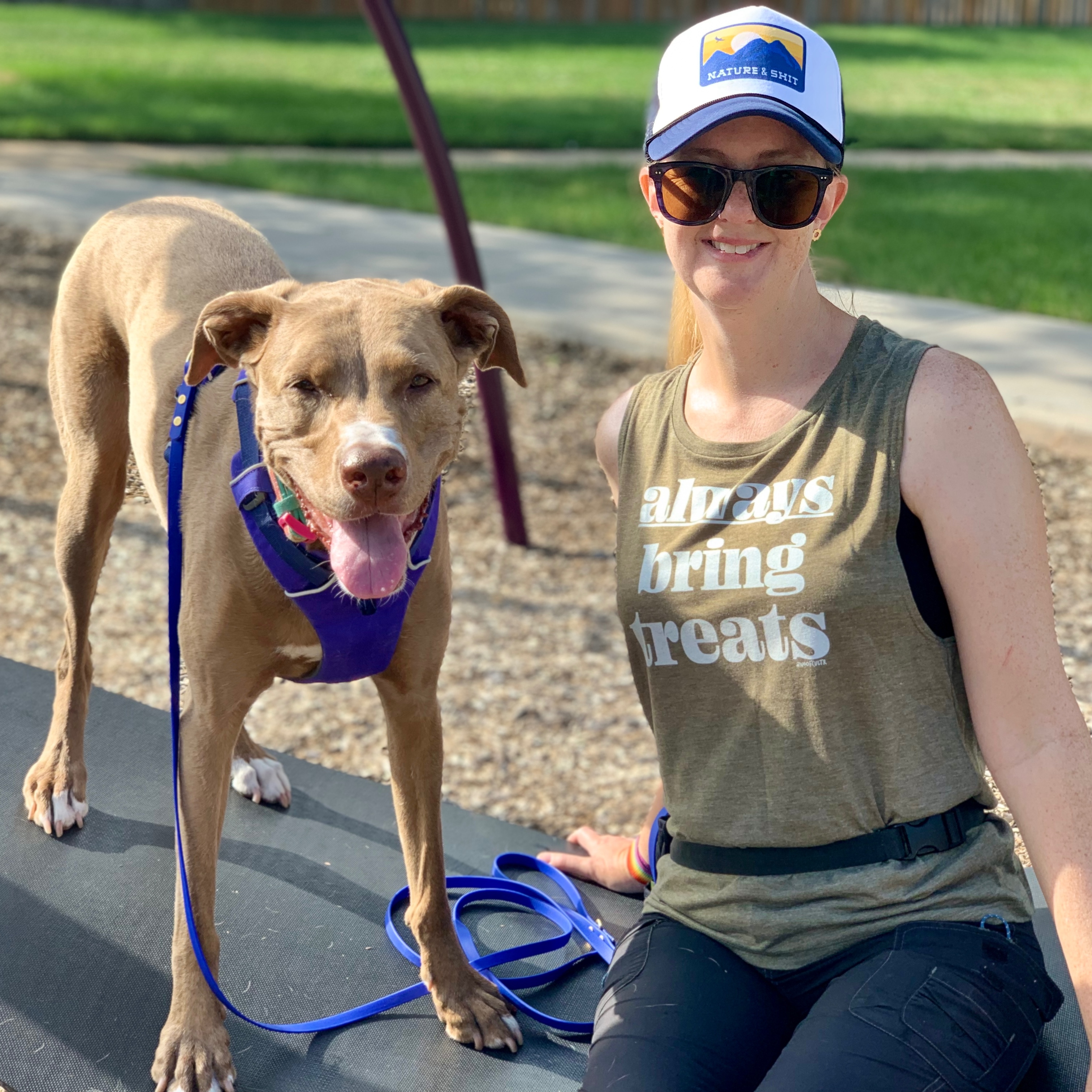Walking a dog on a loose leash is just about every dog owner's dream. Of course, most dogs pull on leash so a dreamy dog walk isn't always so simple - at least not without practice.
If you and your dog are struggling with loose leash walking, rest assured you're certainly not alone. More than 80% of all dog owners say they're having a hard time with their leash skills.
That's why I love these exercises when I'm teaching loose leash walking. With the right practice, we can all learn to share a solid focus and connection with our dogs, end dog pulling behaviors, and become loose leash walking pros together.
Your Dog's Plan
Stop! Don't read this long article. Instead, get everything you need to know, including all advice on Leash Manners, in a customizable step-by-step plan for your dog created by our community of certified trainers and nutritionists.
Important dog walking tips for successful loose leash walking
As you go from frustrated walker to partner with your dog in relaxing, fun walks, keep these dog walking tips in mind to support both you and your pup along the way:
1) Use a high rate/frequency of reinforcement AND high level treats
In other words, have a lot of treats on hand, and be ready to give them to your dog frequently - at least in the beginning stages. The rewards should also be something your dog gets really excited about. This could be his/her favorite toy, or even better - a treat your dog only gets during walk time.
2) Pre-walk exercise can help your dog focus on the walk itself
If your dog is particularly high energy, get your dog out for some regular exercise or playtime before you walk your dog. This way your dog will be able to focus on walking at your side instead of running ahead!
3) Reward your dog's check-ins & attention on walks
Give your dog lots of treats and praise when he/she looks at you or stops pulling. Be sure to do this consistently so your dog knows he/she is being rewarded for good behavior walking politely at your side.
4) Be patient with your dog & yourself
Learning anything new takes time, so be patient with your pup (and yourself!) as you work on developing loose leash walking skills. Remember, walking your dog should be fun for both of you! Keep working on your dog walking training and soon walks will truly be something to enjoy together.
5) Go at your dog's pace on every dog walk. Remember it's your dog's walk.
This is an important one! Make sure you're walking at a pace that's comfortable for your dog. If your dog wants to go fast, let him/her lead the way. If your dog wants to stop and sniff, always let your dog sniff!
6) Mix in sniffing dog walks with training walks
Let your dog sniff - it feeds dogs' souls (and brains for mental stimulation). Make sure to mix in some "just for fun" walks with your training walks so your dog doesn't associate walking on a loose leash with only working hard.
And always end dog walking training sessions on a good note! Give your dog lots of yummy treats and love for walking nicely on leash. Dogs love positive reinforcement just as much as we do, so don't hold back!
Walking your dog can be one of the great joys in life, but it's not always easy. If you and your dog are struggling with loose leash walking, I've got some great exercises that can help.
Leash Manners
Interested in Leash Manners? Follow topics you're interested in to customize your dog’s step-by-step plan so it's most helpful and tailored to your dog when you're ready to get started.
Exercises you never knew you needed to enjoy walking your dog
Distractions are the biggest reason a dog and dog owner struggle with pulling on leash - from seeing other dogs, bicycles, or squirrels to even walking by the dog park). It's all just too interesting! Let's teach your dog the basics of dog walking in a low distraction environment to help transfer those dog walking skills to your everyday walk!
We'll be teaching the skills your dog needs on a walk starting from inside the house, the back yard, and long before the actual walk begins to set your dog up for success.
You can also watch me take you through the step-by-step exercises below in the accompanying video. It often helps to see these steps in action!
Dog walking exercise 1: "dancing with your dog"
The very first exercise I like to use when teaching loose leash walking is called "dancing with your dog."
How to "dance with your dog"
This exercise is especially good for those with a brand new pup or any dog who tends to lose focus easily. You'll want to use your dog's leash and harness as you practice "dancing with your dog" together. (As always, use your proper harness and a traditional leash - avoid retractable leashes. As we've noted before, a retractable leash not only doesn't help you maintain control, it can also be dangerous to both your dog and you.)
You want to use the equipment you'll use on a real, out-in-the-world walk - your dog should begin to recognize that when his/her front clip harness goes on and the leash clips in, it's not a reason to get crazy excited and not pay attention to you.
Try this
Use this exercise to teach your dog to pay attention to what your body is doing and it will teach you a bit about engagement.
- Step 1 - You're going to start with your dog in front of you and you're just going to begin marking and rewarding for any attention. At first, we keep it super simple to really set up your dog for success.
- Step 2 - Toss a treat behind your pup to start fresh, and the moment he/she comes back to you, mark and reward. You'll want to stand still and mark and reward a few times just for looking at you so your dog gets this is what you're doing.
- Step 3 - Once your pup is good and focused, take one step backward and as long as your pup stays focused with you, mark and reward... you don't even need him/her to step with you.
- Step 4 - Now you're going to step to the side, mark and reward. Then step to the other side, mark and reward. Step back, step forward, just keep stepping in different directions, and as long as your dog stays with you, mark and reward.
- Step 5 - When/if your dog loses focuses, just wait, don't nag, and then as soon as your dog does focus on you again, mark and reward.
- Step 6 - Keep doing your dancing exercise for a few more minutes as long as your dog is enjoying it.
- Step 7 - Take a break, unclip the leash, and treat your pup for an exercise well done. And let your dog sit, lie down, mill around, whatever, and generally relax from all that good focus!
Once your dog has shown a good comfort level and ease with the first exercise, we're ready to move on to the second: figure 8 circles. (If you feel your dog isn't quite ready yet, repeat exercise 1 until you're both comfortable. Always go at your dog's pace!)
Your Dog's Plan
Stop! Don't read this long article. Instead, get everything you need to know, including all advice on Leash Manners, in a customizable step-by-step plan for your dog created by our community of certified trainers and nutritionists.
Dog walking exercise 2: figure 8 circles
For our second exercise, we're going to practice walking in a figure 8. This is about walking more in a line with your dog, having him/her next to you but not yet walking in a straight line which is more difficult in dog training.
You'll be walking in a figure 8 or even a circular pattern with your dog. I use cones to create our path (as you can see in the video) but you can use a couple of chairs or whatever you have.
Pro tip: When you're walking dogs - in practice or everyday life, you want to have the leash in the opposite hand of the side where your dog is walking.
That frees the hand closest to your dog for immediate treating. As you walk together with your treat hand on your "dog side," your positive reinforcement treats will be in a close, direct line to your dog's mouth. By having the treats on your dog's side, you also avoid tempting your pup to cross over in front of you for treats, which can trip you up and generally throw off the flow of your calm, happy walk/reward learning in action.
How to do figure 8s with your dog
- Step 1 - Start by having the leash in your opposite hand from your dog and wait for a little bit of focus.
- Step 2 - You can begin to move by luring your dog. Have the treat right by his/her nose and lure your pup into the figure 8. Every couple of steps or every step, click and reward your dog.
- Step 3 - Lure your dog around the figure 8 several times. This is to help your dog pay attention to your body and stay with you as you click and treat with each step as your dog's focus stays on you.
- Step 4 - You can also place the treat at your feet and do this for several steps if you'd like. This will reinforce with your dog that good things happen near your feet.
- Step 5 - If your dog starts to zoom out in front of you for some reason, just wait. When your dog comes back to you, immediately mark and reward.
Walking
Need more advice? Browse all guides in the Walking Channel on topics like Leash Manners - created by our community of certified experts for you and your dog.
Continue practicing your figure 8s, reinforcing with high frequency and high-value treats to fortify your dog's focus.
After these exercises, the next time you clip on the leash, your dog should know it means focus and good things ahead instead of time to turn into a Tasmanian Devil!
Learn effective leash training techniques to teach your dog to walk without pulling in this video.
Choose how you'd like to view this guide's video.

Next up in the Walking Channel on Dogly
Now that you're a confident dog walker with a focused dog in a distraction-free space, next up is taking your skills out into the world to different environments! Jump to the next guide here or learn how to teach your dog how to not pull in distraction-filled environments, and how to walk nicely beside you even with a second dog.
Hop over to the Walking Channel if you'd like to ask any of the Dogly Training Advocates who are all certified dog trainers a question in the Community discussion.
And if you ever need more personalized training help, please reach out to work with me one-on-one here on Dogly!

